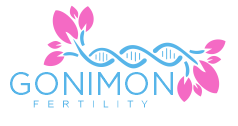
In Vitro Fertilization - IVF
IVF - ICSI
In Vitro Fertilization (IVF) / ICSI
In vitro fertilization is one of the most significantly advanced fertility treatment options. Since the first IVF baby (Louise Brown in 1978), IVF treatment has been improved, leading to steadily risings success rates and million babies born through this technology. Initially, IVF was applied to women with tubal infertility factors, but nowadays it is the preferred treatment option for many other infertility factors. IVF is the most successful infertility treatment that can be offered.
The treatment consists of four main steps:
- Ovarian Stimulation
Gonadotropins are used to stimulate the growth of multiple ovarian follicles. The term gonadotropins refers to medications that contain follicle-stimulating hormone (FSH) and Luteinizing Hormone (LH). During this process, we monitor the growth of the ovarian follicles with transvaginal ultrasound scans and hormonal check through blood exams.
The ovarian stimulation process step is extremely important since the number of oocytes retrieved is related directly to the number of embryos available for transfer. Once the size of the follicles is optimal, trigger injection is administered to induce ovulation and finalize the oocyte maturation. Oocyte retrieval takes place 36 hours later after the trigger injection is applied.
- Oocyte retrieval (egg collection)
The egg collection is performed under vaginal ultrasound guidance. A fine needle is directed through the vaginal wall into the ovarian follicles. The fluid from all the follicles within both ovaries is aspirated and then examined by an embryologist to identify the eggs under the microscope. The extracted eggs are placed in culture plates with nutrient media and then in the incubator. The procedure is performed under sedation and generally takes less than 10–15 minutes to complete.
- Fertilization
On the day of egg retrieval, a fresh sperm sample from the male partner is assessed. If the quality of the sperm is good and there are no other concerns, classic IVF is applied: sperms are placed with the eggs in a culture dish, which is then placed in the incubator.
If there is a male infertility factor or any other concerns (e.g. history of low fertilization rate) Intracytoplasmic Sperm Injection (ICSI) is applied. ICSI involves the injection of a single sperm directly into the oocyte
The morning after insemination, the eggs are examined to determine whether fertilization has occurred.
- Embryo transfer
The embryo transfer can take place either on day 3 or day 5 depending on each patient's occasion and history. It is performed by Dr Thomas Stavrakis under abdominal ultrasound guidance. An echogenic catheter is inserted through the cervix into the uterine cavity and the embryo(s) is placed 1-2cm from the top of the cavity. Extra good quality embryos can be cryopreserved for future use. A pregnancy test is performed 10 to 12 days after the embryo transfer.



